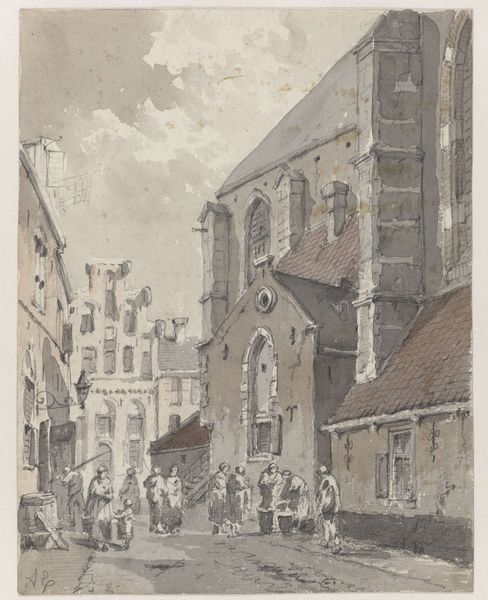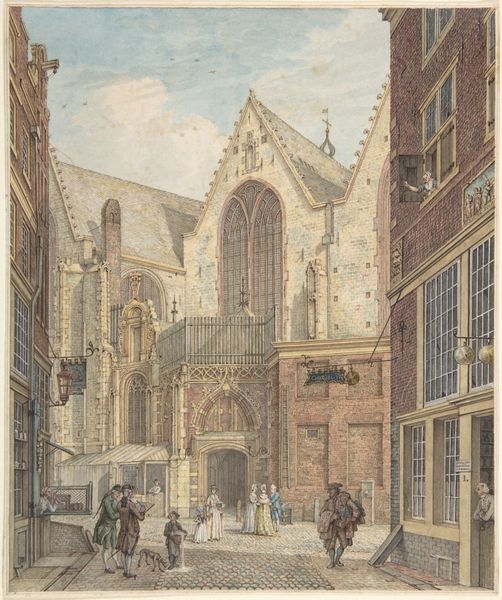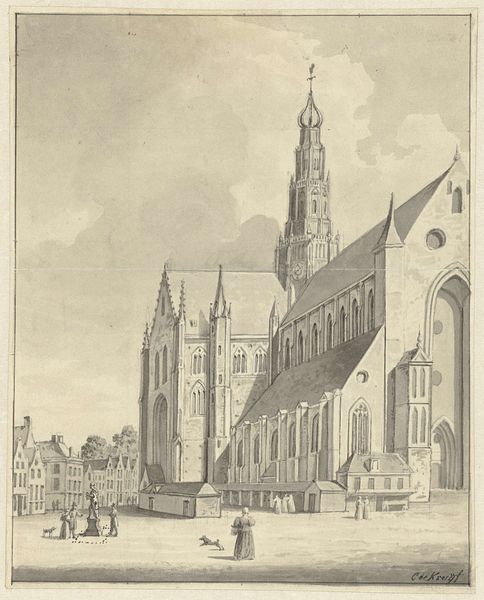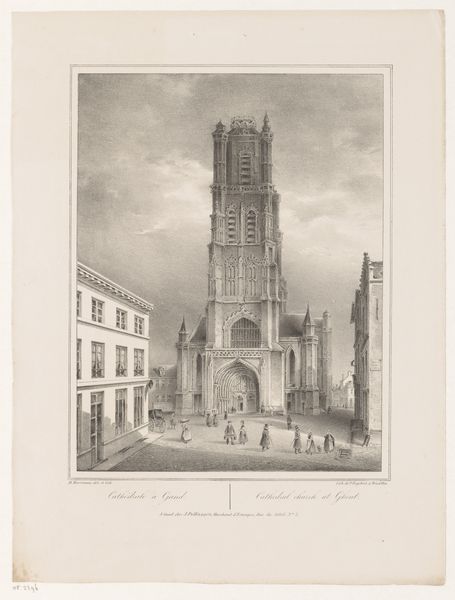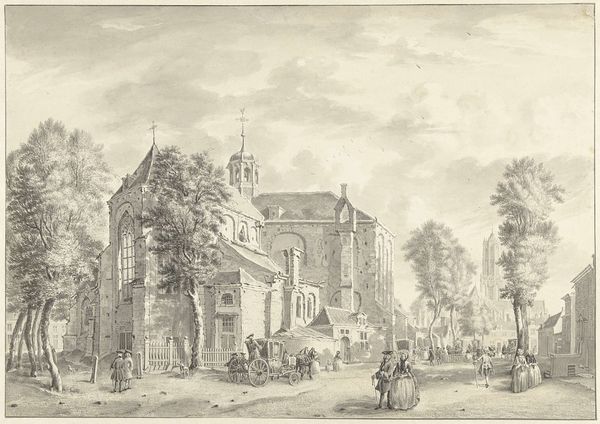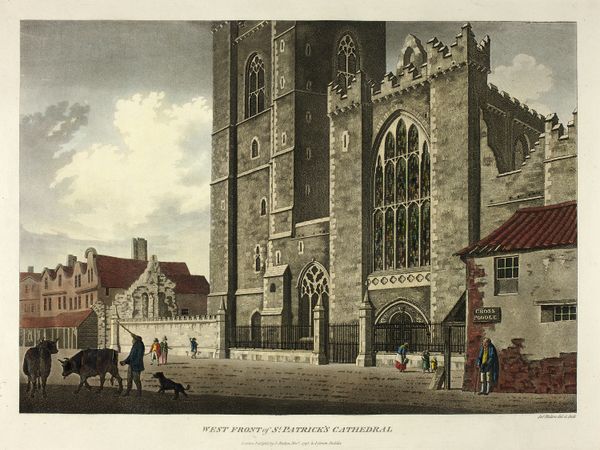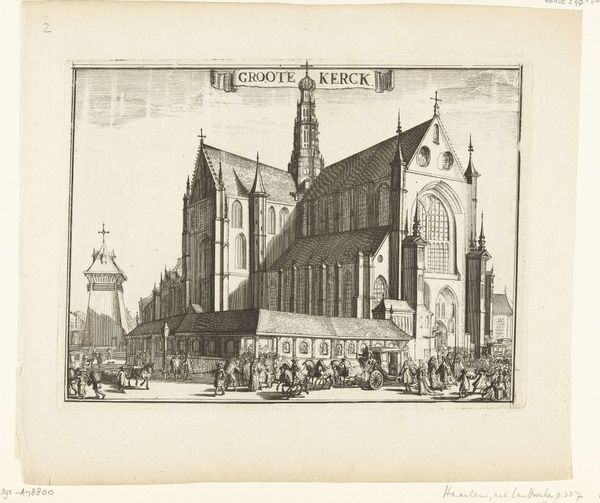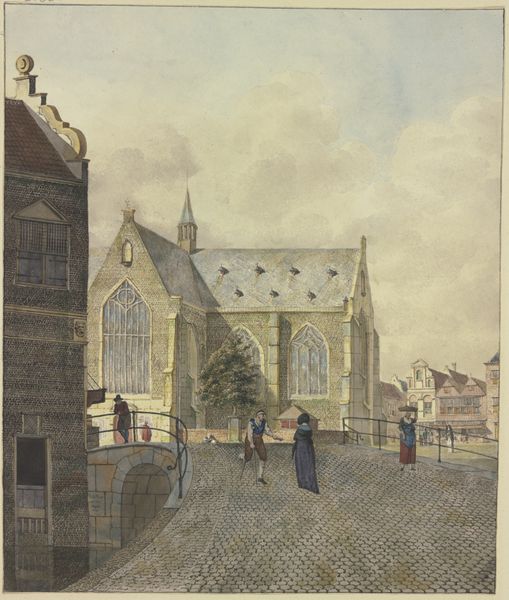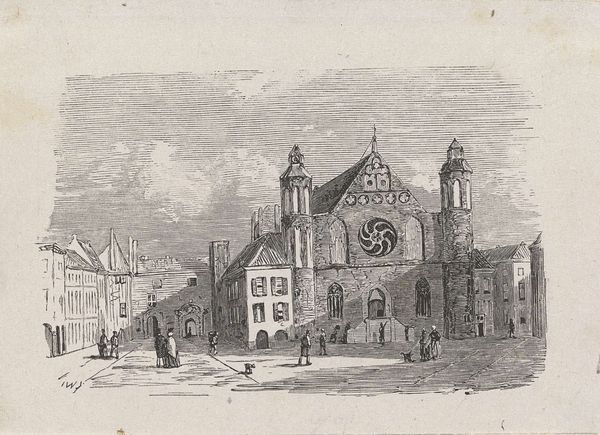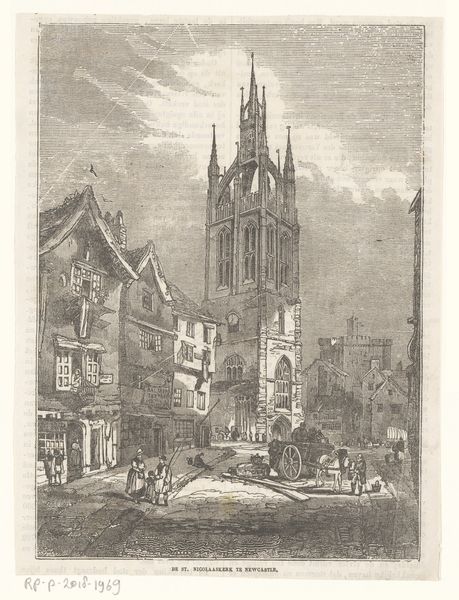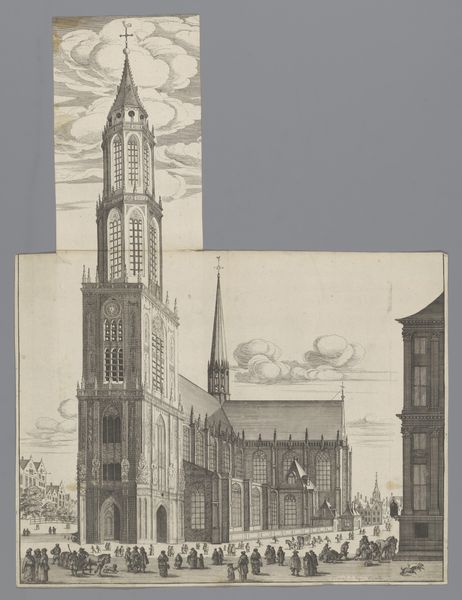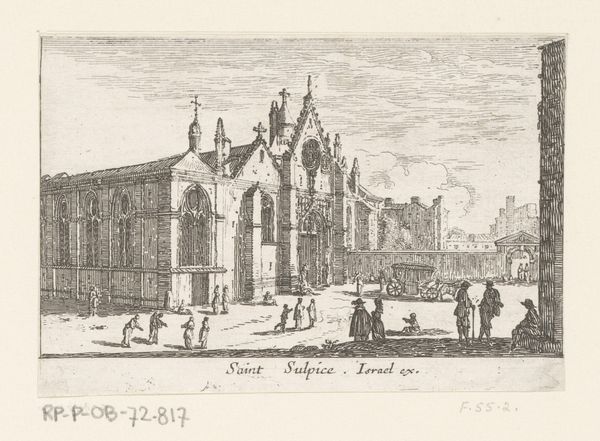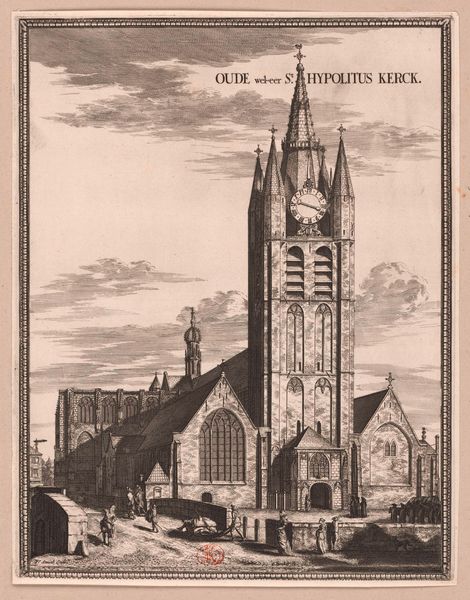
drawing, lithograph, print, paper, watercolor
#
drawing
#
lithograph
# print
#
landscape
#
paper
#
watercolor
#
romanticism
#
19th century
#
cityscape
#
watercolour illustration
#
watercolor
Dimensions: 353 × 287 mm
Copyright: Public Domain
Curator: What a fascinating glimpse into 19th-century Paris. We're looking at Thomas Shotter Boys' "Church of St. Severin, Paris," a watercolor and lithograph created in 1839. Notice the intricate details he captured. Editor: My first impression is one of contrast. The church looms, austere, yet the people in the foreground are engaging in daily life. There is something about the muted color palette that seems to suggest a moment captured just before modernity transforms this street entirely. Curator: Indeed. St. Severin, with its Flamboyant Gothic architecture, represents more than just a religious space. Its soaring height and ornate façade suggest centuries of collective hopes and aspirations built into the very stones. These Gothic structures are memory palaces unto themselves. Editor: And look at the composition. Boys positions the church at an angle, emphasizing its dominance while simultaneously inviting us into the street-level interactions. Who has access to the sacred space and what are they seeking? Curator: It's crucial to understand the religious climate of the era, the ways churches shaped and mediated community life. Notice how he's included not only people attending to worship, but those occupied by commerce, women selling fish or flowers on the margins. Editor: Exactly! The periphery holds its own narratives. It is these informal economies which keep everything turning while institutions such as the Church loom. The lithographic print emphasizes the tension between the structures of power and the lived experience of the people in the neighborhood. There's an underlying commentary on the social hierarchy and labor visible in the street scene, framing the sanctity of religion within an inescapable socioeconomic matrix. Curator: The presence of the Church, I'd argue, also invites us to contemplate continuity. It has remained a cultural hub, while all around the surrounding structures change, reflecting our universal yearning for order and purpose within this temporal existence. Editor: A beautiful aspiration, yes, but continuity comes at a cost, I am always wary of these themes, especially when considering who are included or excluded, and by what social systems that church actively supports. It's not a straightforward narrative of timeless beauty; it's intertwined with power dynamics. Curator: An astute observation. By inviting dialogue around visual art, our individual responses build a much larger narrative that allows viewers a richer understanding. Editor: Precisely, this particular illustration functions not as a fixed declaration, but as a continuous and relevant prompt to reevaluate society’s values.
Comments
No comments
Be the first to comment and join the conversation on the ultimate creative platform.
